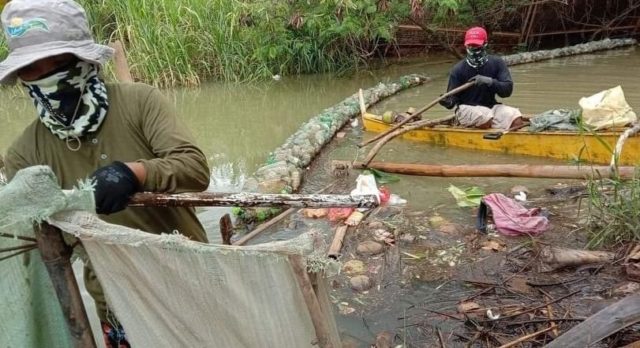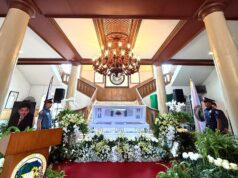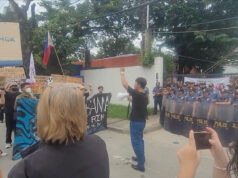Floating trash traps strategically located in Central Luzon rivers. Photo courtesy DENR-PAO
CITY OF SAN FERNANDO – Floating trash traps made of recycled materials are being used by the Department of Environment and Natural Resources to prevent solid wastes from reaching the waters of Manila Bay.
Fifty of such traps made of used plastic bottles and fishing gears were installed in the rivers in Lamao, Orani, Orion, Pinulot, Pangulisanin, Amo, Aguawan, Almacen, Bilolo, Talisay, Mabuco and Samal in Bataan, and Guagua-Pasak river in Pampanga. Each trap measures from 30 to 100 meters.
“Aside from the regular cleanup, which we are doing every week, these trash traps are another strategy to prevent the accumulation of garbage in the shoreline of our Manila Bay. Solid wastes are now being removed from the source before it reaches the bay,” DENR regional executive director Paquito Moreno Jr. said.
DENR record shows that these traps have prevented at least 30 tons of solid wastes from reaching the waters of the Manila Bay through its various tributaries since they were installed in the early 2020.
The traps are strategically placed in rivers and streams where they can stop solid waste from floating further downstream, without hampering the movements of aquatic life such as fish.
“We have partnered with local government units in the region to manufacture and install these floating trashtraps in the rivers within their locality while new traps are continually being installed with their help. Also, our estero rangers regularly collect and characterize the wastes from traps before it can be disposed of in sanitary landfills,” Moreno added.
“Waste characterization is important for us to determine the focus of our Information, Education, and Communication activities especially on the behavioral change campaigns. The data can also be used in the formulation of environmental laws and policies,” he explained.
Moreno also appealed to the public to support DENR in its campaign to save Manila Bay and to religiously practice Reduce, Reduce and Recycle of solid waste management coupled with discipline to reduce the waste generation in the region.
Environmental Management Bureau statistics show that the average solid waste generation of Central Luzon is estimated at 5, 598 tons per year. — Carlo Lorenzo J. Datu/PIA–3




